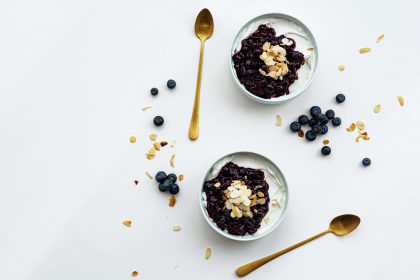Diet trends come and go, and one diet that seems to always remain popular is the Paleo diet. The diet is based on the idea that a human diet should mimic that of our early ancestors, focusing on natural, unprocessed foods.
Brown rice is one of those versatile grains that has been around for centuries and enjoyed by many cultures throughout the world. It’s a staple in many diets, including vegetarian, vegan and traditional cuisines. But is brown rice really Paleo-friendly?
The answer is probably not. The Paleo diet eschews most grains, including all types of rice, such as white, brown, basmati, and red. The reasoning behind this is that grains are not a part of our early ancestors diet, which means they have not evolved to be properly digested by the human body. Instead, grains can cause intestinal distress, irritation and other health issues.
So if you’re looking for a grain substitute for your Paleo diet, what do you do? While some Paleo dieters argue that small amounts of brown rice could fit in with your Paleo plan, it’s generally not recommended. Instead, try using cauliflower “rice” as a substitute.
This involves simply grating or pulsing cauliflower down in a food processor until it resembles grains of rice. To cook, simply simmer it with some broth, herbs, and/or spices for about five minutes.
Another option is to use nuts and seeds, like almonds and sunflower seeds, to replace the grain. You can either grind them up into flour and use them as a substitute for flour in grain-based recipes, or you can even “rice” them. Just put them in a food processor, and pulse them until they resemble grains of rice.
For those looking for a grain substitute that’s lower-carb than regular grains, try amaranth, buckwheat, or quinoa. They are all considered Paleo-friendly because they are ancient grains. They can also be used as a substitute for grains in many recipes.
The Paleo diet is all about finding healthier, more natural food choices. Brown rice can still be part of that, but in a limited capacity. To get the most out of the diet, try using Paleo-friendly grain substitutes like cauliflower “rice,” nuts and seeds, and ancient grains.
Photo by TUAN ANH TRAN on Unsplash
That way, you can still enjoy the great tastes and textures of grains without compromising the Paleo lifestyle.
What is the Paleo Diet?
The paleo diet is based on the dietary habits of our ancestors, who relied primarily on hunting and gathering for their nutrition. This means that, on a paleo diet, you should largely focus on eating fresh fruits and vegetables, fish, grass-fed meats, and a few nuts and seeds, while avoiding processed foods and grains.
Is brown rice Paleo?
This is where things get a bit tricky. Brown rice is gluten-free, like all grains, and is considered a complex carbohydrate that is said to provide more nutrition than its white counterpart. However, grain consumption didn’t begin until ancient times, and is not part of the original version of the Paleo diet. Ultimately, whether you include brown rice in your diet or not is a personal decision.
How is brown rice nutritious?
Brown rice has a number of health benefits! It is an excellent source of plant-based protein, and rich in complex carbohydrates, which are said to provide long-lasting energy or calories and help regulate blood sugar levels. It is also naturally high in essential vitamins and minerals, including thiamin, magnesium, and manganese, plus it contains some fiber that supports digestive health.
How do I incorporate brown rice into my diet?
You can add cooked brown rice to salads and stir-fries, or replace white rice with it in soups and curries. You can also try different varieties of brown rice like short-grain, long-grain, jasmine, and even black rice!
What alternatives are there to brown rice?
If you decide not to include brown rice in your diet, there are plenty of other grain-free carbohydrates you can substitute for it. Cassava, sweet potatoes, and squash are all great alternatives that are paleo-friendly and provide excellent nutrition.





